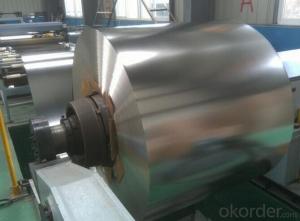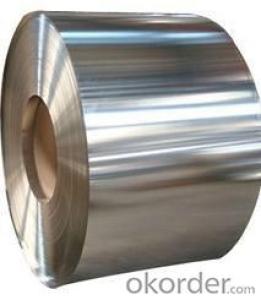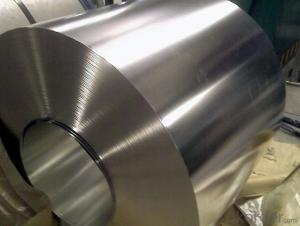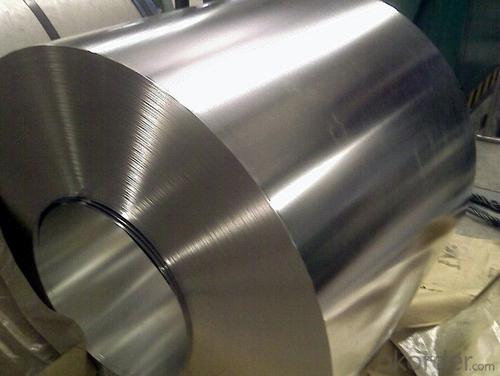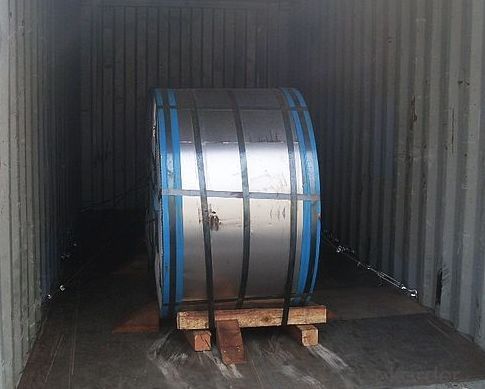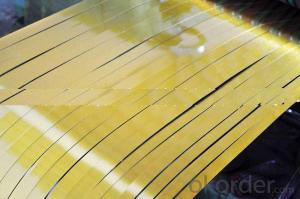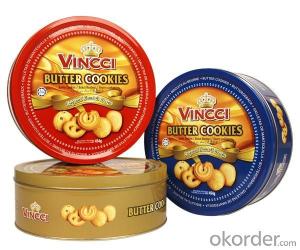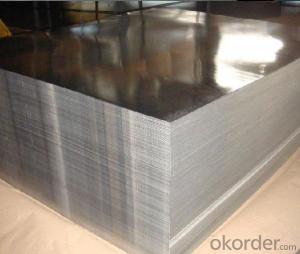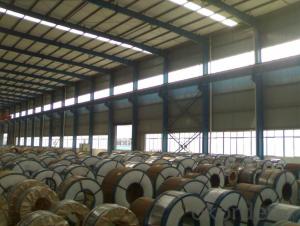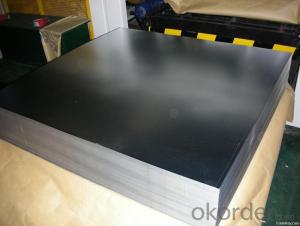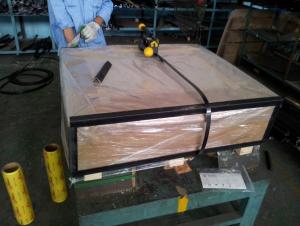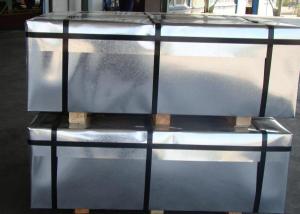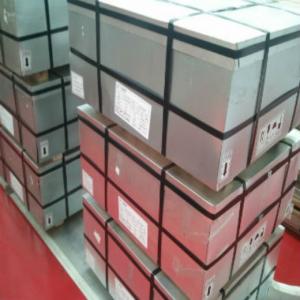Electrolytic Tin Plate Coils for Foods Cans Making
- Loading Port:
- Tianjin
- Payment Terms:
- TT OR LC
- Min Order Qty:
- 25 m.t
- Supply Capability:
- 7000 m.t/month
OKorder Service Pledge
OKorder Financial Service
You Might Also Like
1.Structure of Electrolytic Tin Plate Coils for Foods Cans Making Description
Electrolytic Tin Plate Coil for Foods Cans Making, is one thin steel sheet with a coating of tin applied by electrolytic deposition. Tinplate made by this process is essentially a sandwich in which the central core is strip steel. This core is cleaned in a pickling solution and then fed through tanks containing electrolyte, where tin is deposited on both sides. As the strip passes between high-frequency electric induction coils, it is heated so that the tin coating melts and flows to form a lustrous coat.
2.Main Features of the Electrolytic Tin Plate Coils for Foods Cans Making
Appearance – Electrolytic Tin Plate is characterized by its beautiful metallic luster. Products with various kinds of surface roughness are produced by selecting the surface finish of the substrate steel sheet.
Paintability and printability – Electrolytic Tin Plates have excellent paintability and printability. Printing is beautifully finished using various lacquers and inks.
Formability and strength – Electrolytic Tin Plates have got very good formability and strength. By selecting a proper temper grade, appropriate formability is obtained for different applications as well as the required strength after forming.
Corrosion resistance – Tinplate has got good corrosion resistance. By selecting a proper coating weight, appropriate corrosion resistance is obtained against container contents. Coated items should meet 24 hour 5 % salt spray requirement.
Solderability and weldability – Electrolytic Tin Plates can be joined both by soldering or welding. These properties of tinplate are used for making various types of cans.
Hygienic – Tin coating provides good and non toxic barrier properties to protect food products from impurities, bacteria, moisture, light and odours.
Safe – Tinplate being low weight and high strength makes food cans easy to ship and transport.
Eco friendly – Tinplate offers 100 % recyclability.
Tin is not good for low temperature applications since it changes structure and loses adhesion when exposed to temperatures below – 40 deg C.
3.Electrolytic Tin Plate Coils for Foods Cans Making Images
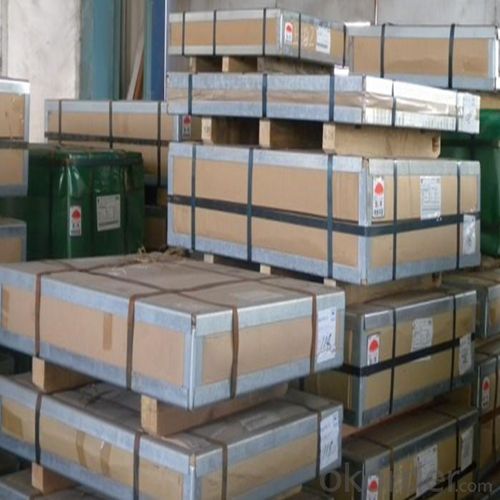
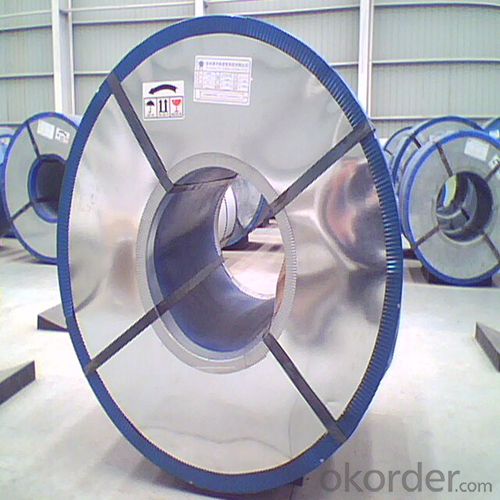
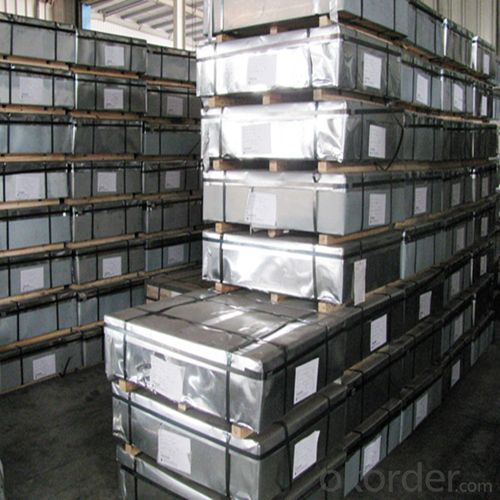
4.Electrolytic Tin Plate Coils for Foods Cans Making Specification
Standard | ISO 11949 -1995, GB/T2520-2000,JIS G3303,ASTM A623, BS EN 10202
|
Material | MR,SPCC |
Thickness | 0.15mm - 0.50mm |
Width | 600mm -1150mm |
Temper | T1-T5 |
Annealing | BA & CA |
Coil Inner Diameter | 508mm |
Weight | 6-10 tons/coil 1~1.7 tons/sheets bundle |
Passivation | 311 |
Oil | DOS |
Surface | Finish,bright,stone,matte,silver |
5.FAQ of Electrolytic Tin Plate Coils for Foods Cans Making
- How are the Electrolytic Tin Plates specified?
The Electrolytic Tin Plates are specified as per the steel base, extent of tempering, the coating weight, annealing method and the surface finish.
- How many types there are for base steels?
The base steels are of three types: Type MR, L, D
- Q: Can tinplate be used for packaging electronic devices?
- Yes, tinplate can be used for packaging electronic devices. Tinplate is a commonly used material for packaging due to its durability, corrosion resistance, and ability to protect against external factors such as moisture and oxidation. It provides a secure and protective housing for electronic devices, ensuring their safe transportation and storage. Additionally, tinplate can be easily customized and printed on, allowing for branding and product information to be displayed on the packaging.
- Q: Can tinplate be used for luxury packaging?
- Yes, tinplate can be used for luxury packaging. It offers a premium and elegant appearance, durability, and protection for high-end products. Additionally, tinplate can be customized with various finishes, embossing, and printing techniques to create luxurious and visually appealing packaging designs.
- Q: Can tinplate be used for roofing and construction?
- Yes, tinplate can be used for roofing and construction purposes. Tinplate is a durable material that provides excellent corrosion resistance and is often used for roofing applications due to its ability to withstand various weather conditions. It is also commonly utilized in construction for cladding, wall panels, and other architectural elements.
- Q: How does tinplate perform in terms of light protection?
- Tinplate performs well in terms of light protection due to its opaque nature, which helps to block out light and prevent the entry of harmful UV rays.
- Q: How does tinplate packaging withstand extreme temperatures?
- Tinplate packaging is able to withstand extreme temperatures due to its high melting point and excellent heat resistance properties. The tin coating on the steel base provides a protective layer that helps to prevent the metal from warping or melting when exposed to extreme heat. Additionally, the structural integrity of tinplate packaging is maintained even in extreme cold temperatures, making it a reliable choice for preserving the quality and safety of various products.
- Q: How is tinplate different from aluminum packaging?
- Tinplate and aluminum packaging differ in terms of their material composition, properties, and applications. Tinplate is made from thin sheets of steel coated with a layer of tin, providing excellent corrosion resistance and a shiny appearance. On the other hand, aluminum packaging is fabricated from aluminum, offering lightweight, high strength, and superior resistance to rust or corrosion. Additionally, aluminum is a great conductor of heat and electricity. While tinplate is commonly used for food cans, tin containers, and household products, aluminum packaging is popular for beverage cans, aerosol cans, and various consumer goods.
- Q: How does tinplate contribute to the overall convenience of packaging?
- Tinplate contributes to the overall convenience of packaging due to its durability, versatility, and ability to preserve the quality and freshness of products. It provides a protective barrier against moisture, light, and oxygen, which helps extend the shelf life of food and beverages. Additionally, tinplate is lightweight, stackable, and easy to handle, making it suitable for transportation and storage. Its smooth surface allows for easy printing, enabling clear labeling and branding. Overall, tinplate packaging enhances convenience by ensuring the integrity and convenience of various products.
- Q: How does tinplate perform in terms of printability?
- Tinplate performs exceptionally well in terms of printability. Its smooth surface allows for high-quality printing with vibrant colors and fine details, making it a popular choice for packaging and labeling applications.
- Q: How to open cans
- Put the tins of canned fruits soaked in hot water for 3-5 minutes, so that the tank gas temperature rises, the pressure is increased, which is the principle of expansion and contraction. Turn the canned fruit bottle upside down for a while. When the liquid in it breaks down the vacuum inside and outside, tap it in the bottom with your palm and pull it gently. It's easy to pull apart.
- Q: Can tinplate be used for packaging agricultural products?
- Yes, tinplate can be used for packaging agricultural products. Tinplate is a popular choice for packaging due to its durability, resistance to corrosion, and ability to protect against light, moisture, and oxygen. It provides a safe and secure packaging solution for agricultural products, ensuring their freshness and extending their shelf life.
Send your message to us
Electrolytic Tin Plate Coils for Foods Cans Making
- Loading Port:
- Tianjin
- Payment Terms:
- TT OR LC
- Min Order Qty:
- 25 m.t
- Supply Capability:
- 7000 m.t/month
OKorder Service Pledge
OKorder Financial Service
Similar products
Hot products
Hot Searches
Related keywords
